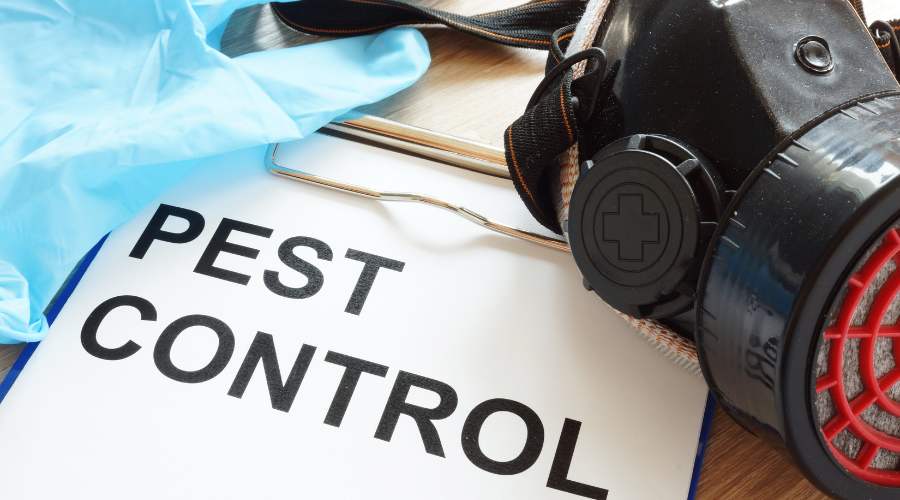Top 10 Amazing Home Pest Facts
Mind-Boggling Things You Didn’t Know
Do you ever feel like you’re constantly battling pests in your home? From tiny ants invading your kitchen to mice scurrying around in your attic, dealing with unwanted guests can be frustrating and downright gross. However, there are some pretty fascinating things about these uninvited guests that you may not know.
Understanding more about the invaders that sneak into your house can help you get rid of them more effectively. Here are the 10 amazing facts about common household pests that will make you see them in a whole new light!
1. Cockroaches Can Live Without Their Heads
It’s true, they can live for up to a week without their heads! This is because their open circulatory system allows hemolymph to circulate without a pumping heart. They die eventually due to lack of food sources and the ability to breathe.
2. Spiders Have Blue Blood
Spider’s vital fluid contains hemocyanin, a copper-containing protein that turns it to blue. This is different from the iron-rich hemoglobin that makes human blood red.
3. Bed Bugs Don’t Actually Live in Beds
Bed bugs prefer to hide in cracks and crevices during the day, often near where people sleep. But they don’t infest mattresses – instead, they hide in bed frames, nearby furniture, floorboards and baseboards.
4. Mosquitoes Are Attracted to Certain Blood Types
They use receptors that detect chemicals emitted from your skin to find targets. People with type O attract them more because they produce a chemical signal that indicates “universal donor.” These are also drawn to carbon dioxide you exhale.
5. Termites Eat Wood to Digest Cellulose
Termites consume dead wood and use microorganisms in their gut to break down the cellulose into usable sugar. They cause over $5 billion in property damage every year in the United States.
6. Fleas Can Jump Up to 150 Times Their Own Height
Fleas have incredibly powerful back legs that allow them to vertical jumps up to 7 inches – about 150 times their own body length. Their explosive jumps help them move quickly between hosts.
7. Ladybugs Secrete Blood From Their Knees
The substance that leaks from a ladybug’s leg joints contains alkaloids that deter predators. The red liquid smells and tastes awful so animals learn to avoid eating the otherwise tasty beetles.
8. Brown Recluse Spiders Have Violin-Shaped Markings
The brown recluse gets its name from the unmistakable dark brown violin-shaped marking on its back. Their venom can cause painful blisters and sores in humans if they bite.
9. Mice Can Squeeze Through Holes the Size of a Dime
Thanks to collapsible skeletons, mice can wiggle through incredibly tiny entry points the size of a dime. Mice can also survive falls from up to 15 feet without being injured.
10. Clover Mites Feed on Mold and Fungus
Despite their name, clover mites don’t actually feed on clover plants. They use needle-like mouthparts to suck juices from mold, fungus and decaying plants around your home.
Frequently Asked Questions
How do I get rid of roaches?
Use boric acid, keep your home clean and dry, seal cracks and crevices, and use cockroach baits to control an infestation. Avoid using bug bombs which just scatter them.
What natural repellents keep spiders away?
Use essential oils like peppermint, citrus, tea tree, lavender or eucalyptus to repel them. Keep your home dry and seal cracks. Vacuum regularly and remove webs.
What is the best way to control bed bugs?
Detect infestations early through inspections. Reduce clutter. Apply diatomaceous earth powder in cracks near beds. Use mattress encasements. Heat treatment by a professional is the most effective method.
How do you keep mosquitoes out of your house?
Install tight-fitting screens on windows and doors. Use a fan near open doors to keep them away. Eliminate standing water breeding sites. Burn citronella candles or use electric repellent devices outdoors.
Conclusion
Understanding the biology and behaviors of common pests can help you better control infestations. Use preventative measures like sealing cracks, reducing clutter, installing insect screens, and using repellents. If problems persist, don’t hesitate to call a pest control professional for assistance in getting rid of their colony.
With a little vigilance, you can outsmart those pesky invaders! Learning more about the fascinating hidden lives of home nuisance gives you an advantage in your defense against them and the health diseases they bring.




